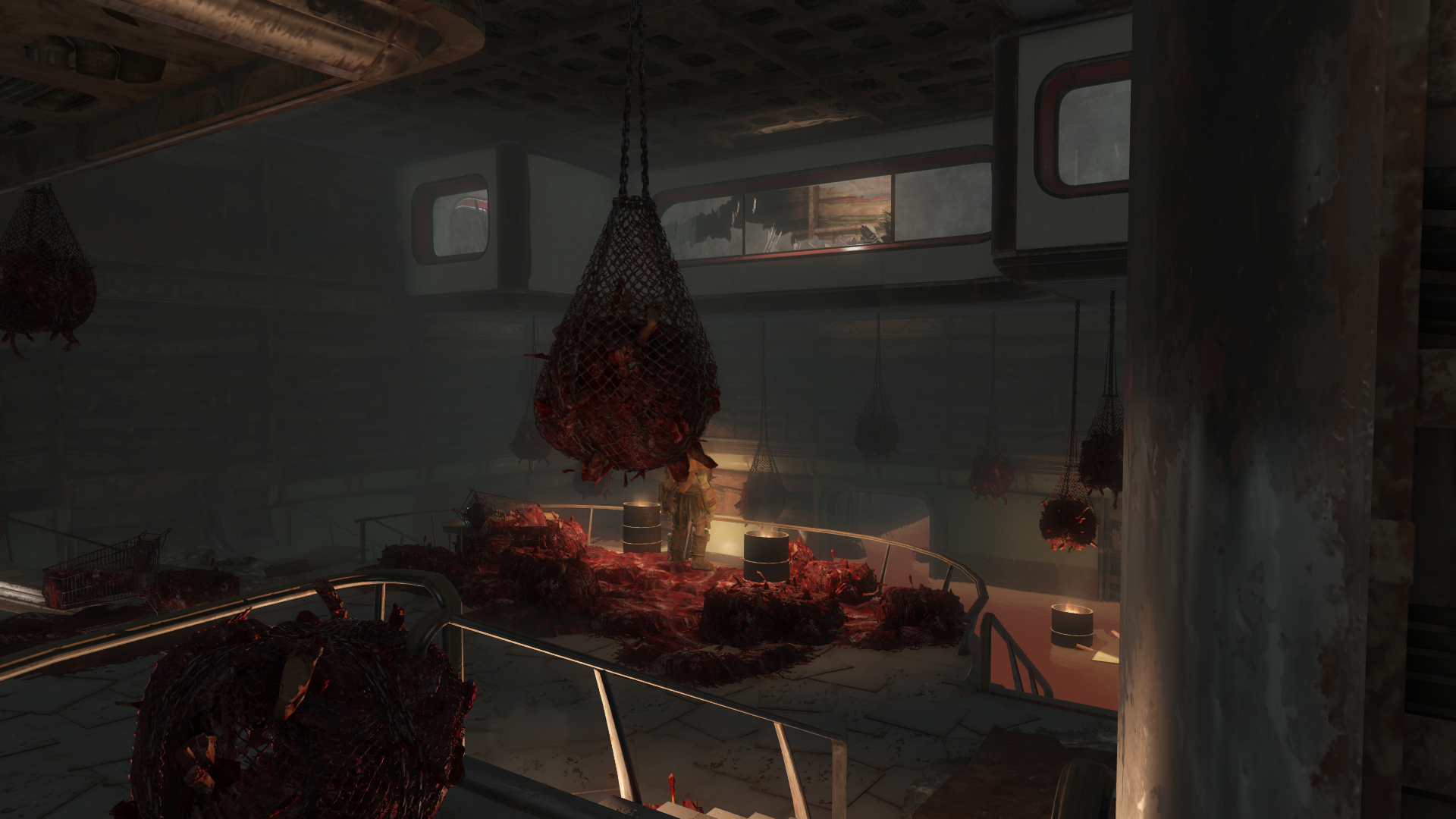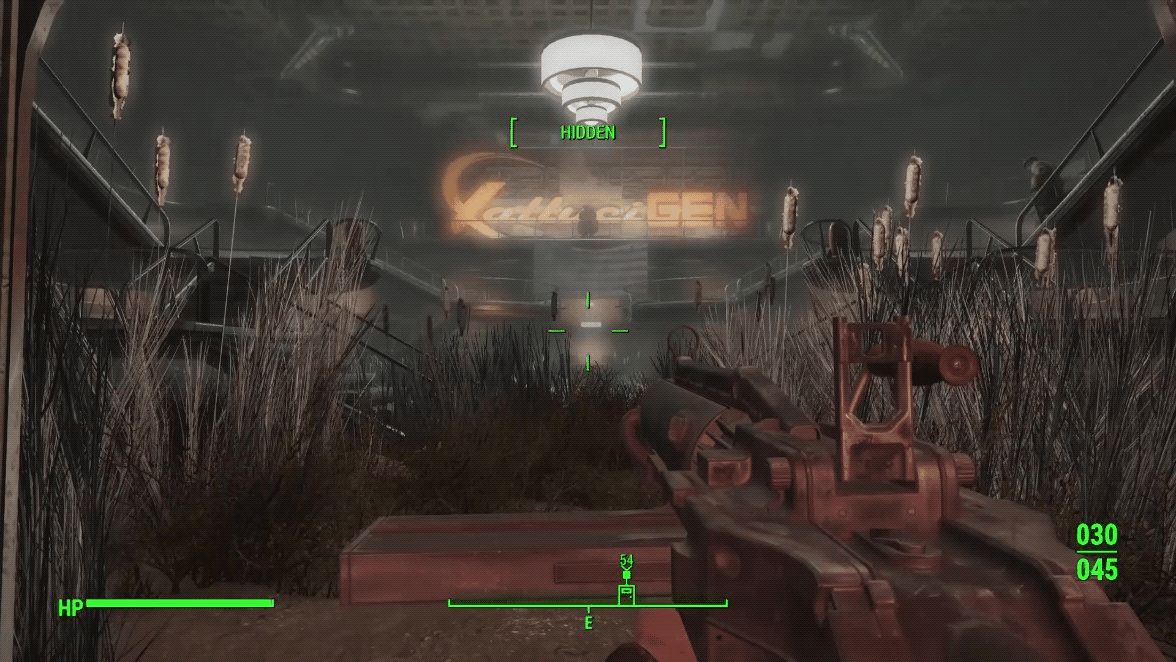Groove Juice, Man
Position: Individual Project
Engine: Creation Kit - Fallout 4
Development Time: 4 months
Synopsis: Groove Juice, Man is a single-player level designed for Fallout 4. The mod showcases several custom environments and is intended for mid-level players.
> Download Project <
Overview
Groove Juice, Man is a branching quest that begins deep within the marshlands at the bottom of the Commonwealth.
In the quest, players stumble upon the cave of Docky G., an estranged man, who will have players undertake a quest to get him some Potent Groove Juice from Old Hallucigen to hopefully wake up his comatose ‘grandfather.’ Will players succeed in obtaining the Groove Juice? Or will they fall to the mighty Lord Jungo Mox who now resides within Old Hallucigen…
Design Goals
Docky G’s Cave: Naturally Psychedelic






For Docky G’s Cave I was really going for an psychedelic yet natural vibe. I wanted a ton of groovy colors and lights and most of that had to come from diegetic sources. For instance, in addition to placing all of the foliage shown, I then added dozens of small lights above them to give them their glow. This was combined with larger tone setting lights which helped blend the lighting.
Old Hallucigen: Designing a Massive Complex






Old Hallucigen is the main set piece of my mod – this is where players are intended to spend the most time exploring. The main focus of this space was to sell a truly massive underground complex. I achieved this by focusing on wider areas for high-traffic flow and replacing walls with windows or broken doors that help control the size of the play-space while hinting at a much larger world for players.
The Inner Sanctum: A Multi-layered Design






Like Old Hallucigen, the design of this space was a multilayered approach. First, the space had to convincingly look like a headquarters and touring facility. Given Fallout 4’s timeline, though, it then had to be broken apart in a way that represents 200 years worth of damage. Next, because of its location, flooding and overgrowth are rampant throughout the facility. Finally, super mutants have begun to occupy this space, and have also left their unique aesthetic imprint. Each of these aesthetic passes added another layer of history to the space to make the narrative history more convincing.
Combat: Advantage to the cautious player
In designing combat for my spaces, I felt it important to let players have opportunities to see their enemies first before engaging them. This is the first time players encounter enemies in the quest and in addressing this goal I placed the enemies on visible pathing patterns within the initial scene composition. Additionally, there is a space later where players who explore to find the alternative route forward will have the drop on a final enemy versus players who proceed the standard route.
Maps: Before & After
While some additional side areas got added throughout the creation of the project, the initial critical path and core designs of each level remained consistent.






Dialogue Trees
![Miss Synth Dialogue2 - Quest All [Had Beer].png](https://images.squarespace-cdn.com/content/v1/5d056fd391854d000129131f/1563270278202-NGKG1V8LNQ90QU1NIR9U/Miss+Synth+Dialogue2+-+Quest+All++%5BHad+Beer%5D.png)







Given the branching nature of the quest, it was particularly helpful to plan out the dialogue in its entirity before converting it over to creation kit’s dialogue tool.
Video walkthrough
Post Mortem
What Went Well:
Creation of several unique environments: I spent a lot of time learning creation kit and the most effective ways to utilize their environmental assets and variations.
Testing tech ahead of time: I realized going into the project that there would be a lot of things I needed to test in small tech-demo levels first before trying to implement them in my final mod.
Planning: I collected several visual references both outside & within Creation Kit to combine the ideal and the practical for what the space would really look like. I also created dialogue trees to represent what the player would actually be able to say during the quest and how the NPCs would respond accordingly.
Challenges:
Quest dialogue: Specifically, how to convey all the critical information the player needs, sufficient reasoning for the quest’s necessity, and providing additional narrative information to players who are interested. I iterated a lot throughout the course of the mod and frequent play-testing and feedback greatly helped me improve my narrative conveyance.
Filling large spaces: Initially a lot of my very large spaces ended up feeling very plain. It was really difficult for me to imagine how to fill these massive spaces so they felt realistic and still had consistent game-play value. Ultimately, I got better at breaking down big spaces into smaller spaces, and designing stories within those spaces.
Quest Logic: I wanted my quest to feel natural: if you stole something in front of NPCs they would react accordingly, if you changed your mind about helping an NPC you could betray them. These evolutions in my design proved difficult to implement as it often meant that I had to work in several adjustments to my logic and existing dialogue options.
What I learned:
I learned a lot about Fallout 4’s level and interior cell design (primarily the high-tech tile-set) by playing through the game and studying several reference cells. These references helped me attempt to match the base-game’s quality in relation to lighting, clutter, and level design.
Designing for multiple play styles: I realized that beyond making a mod that plays one way – there are lots of different players to design for and all of their play-styles are supposed to be valid. Therefore, I think I learned a lot about designing for multiple play-styles in ways which hopefully didn’t infringe on any one player’s type of play-style.

